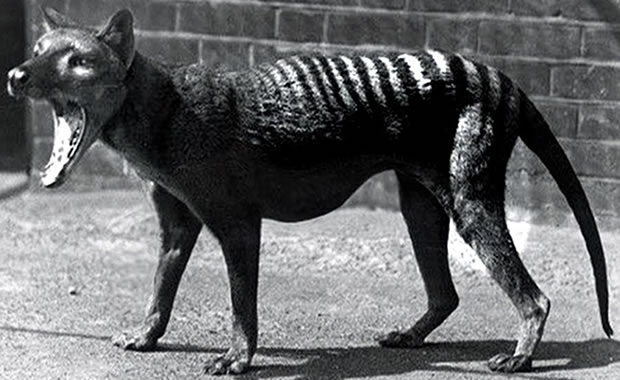
Komodo Island Monitor
|
Creature Profile
Also called the Komodo dragon, the Komodo Island monitor is the largest living lizard in the world. It is found on the islands of Komodo, Rinca, and Padar in eastern Indonesia. Adults can reach up to ten feet long and can weigh over 150 lb. Young monitors are green in color with yellow and black bands, and as they get older they lose the bands and become brown to grayish red in color. They have strong limbs and a powerful and muscular tail and their bodies are covered with rough scales. Males are larger than females. They have weak eyesight and poor hearing making them rely on their stealth, good sense of smell, and patience to ambush and catch prey as they walk by.
The Komodo Island monitor is nocturnal and lives in dry, scrubland in the tropical savannah forests of the Komodo Islands. They prefer to dwell in open lowland areas with tall grasses and bushes, but can also be found on beaches, ridge tops, and dry riverbeds. Young monitors seem to remain in trees until they are eight months old. The Komodo Island monitor is carnivorous and prefers to feed on dead animals, but they are also known to hunt live prey such as pigs, wild boar, horses, and water buffalo, and they may also eat smaller Komodo Island monitors. During mating season, the males compete for females to mate with by wrestling. Mating occurs in July and August and females lay up to 30 eggs in September. She buries the eggs underground and they hatch after about eight months. After they hatch and are able to move out, the young immediately move to nearby trees. It is believed that the parents do not interact with the young once they hatch.
The Komodo Island monitor is listed as endangered throughout its entire range. Threats to the species include poaching, loss of habitat due to human interference, and decline in prey populations. Some people have considered the Komodo Island monitor a pest and a serious menace to humans. To protect the species, the Indonesian government has made the islands of Padar and Rintja into nature reserves for both the lizard and its prey. Commercial trade of specimens and skin has also been legally banned.
Wikipedia Article

|
Wikipedia Article Copyright Notice: This article is licensed under the GNU Free Documentation License. It uses material from the Wikipedia article "Komodo dragon". |
May 9, 2017
Glenn, C. R. 2006. "Earth's Endangered Creatures - Komodo Island Monitor Facts" (Online). Accessed 4/18/2024 at http://earthsendangered.com/profile.asp?sp=270&ID=3.
Need more Komodo Island Monitor facts?




